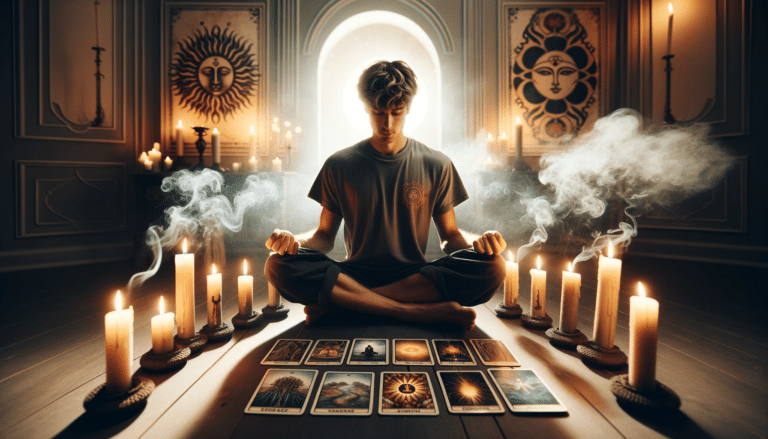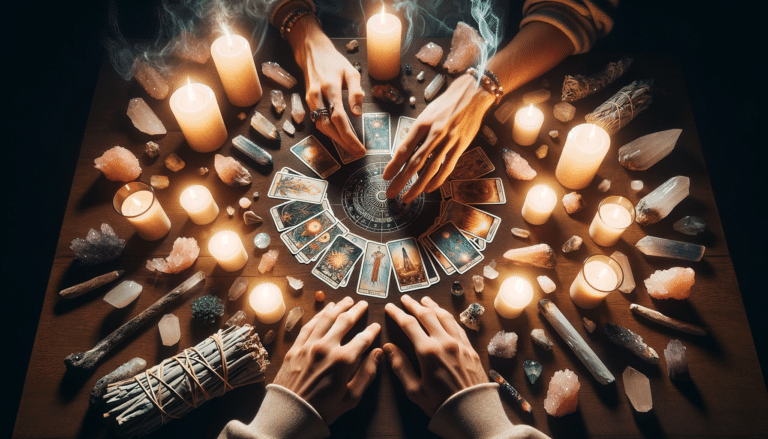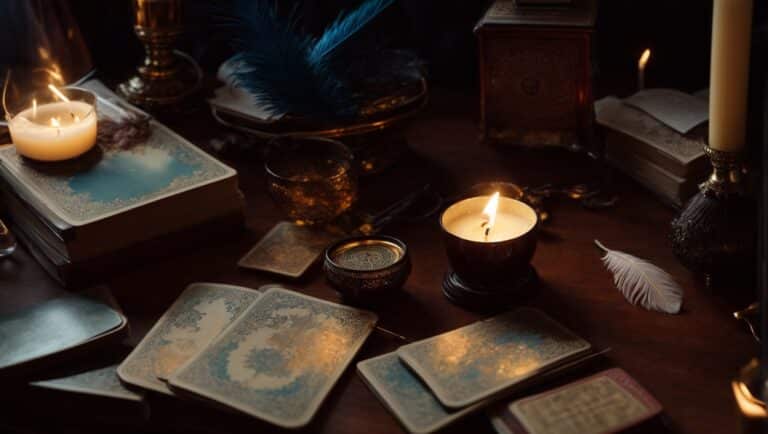Tarot Card Readings and Meanings – Why They Hold Specific Meanings

Ever picked up a tarot card and wondered, ‘Why’s this mean what it does?’ You’re not alone. It’s more than just random pictures and symbols. They’re steeped in history and tradition, each holding a unique story.
Dive into this article on tarot card readings and meanings to unravel the mystery behind tarot card meanings, understand their structure, and debunk common misconceptions.
You’ll also discover how intuition plays a crucial role in interpretation. Ready to unlock the secrets of the tarot? Let’s begin.
Key Takeaways
- Tarot cards have a rich history and structure, originating in 15th century Europe and evolving into a deck of 78 cards divided into the Major Arcana and the Minor Arcana.
- The symbolism and interpretation of tarot cards are rooted in specific meanings, with the Major Arcana representing significant life events and the Minor Arcana depicting everyday matters.
- Card positions and spreads are important in tarot readings, as the position of a card influences its interpretation and different spreads have specific meanings for each position.
- Intuition plays a crucial role in interpreting tarot card meanings, adding a unique layer of understanding to the traditional meanings and aiding in bringing clarity and value to readings.
History of Tarot Card Readings

You’ve probably wondered how tarot card readings originated and evolved, so let’s delve into their fascinating history. These mystical cards were born in the 15th century in Europe, specifically in Italy. They started as simple playing cards, but over time, they took on a more profound role.
The transformation began in the 18th century when mystics and occultists saw a deeper meaning in the tarot’s symbolic illustrations. They believed these cards held the secrets of the universe and could provide insight into the human psyche. So, they started using them for divination and spiritual guidance, a practice that’s continued to this day.
It’s important to note that the meanings attributed to each tarot card aren’t arbitrary. They’re rooted in centuries of symbolism and interpretation, refined over generations of use. Each card has a specific, nuanced meaning, offering insight into different aspects of life, from love and relationships to career and personal growth.
Understanding the history of tarot cards helps you appreciate their depth and complexity. Now that we’ve explored their historical evolution, it’s time to examine the structure of tarot decks in the next section.
Check out our Tarot Decks & Oracle Cards here…
The Structure of Tarot Decks
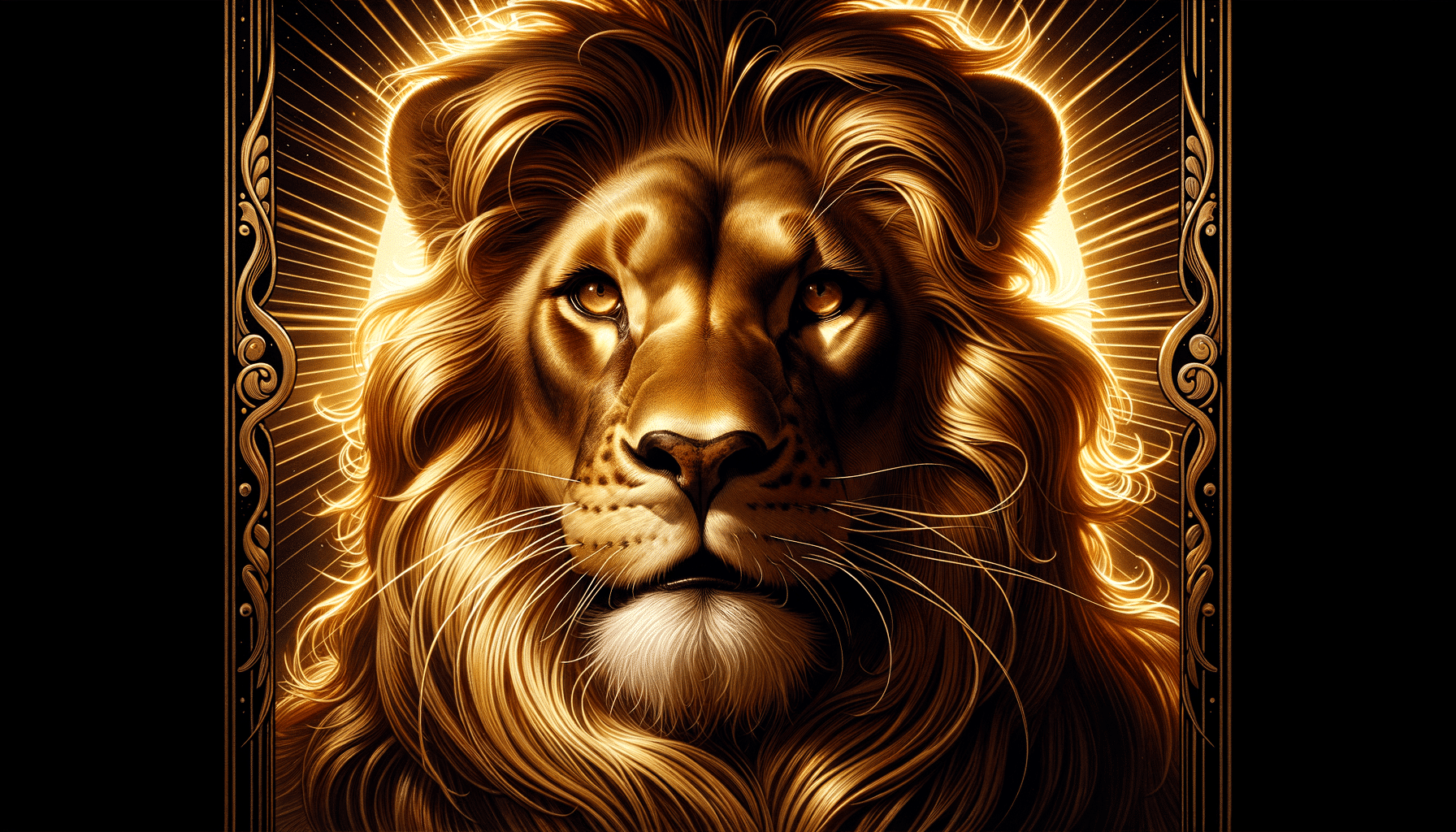
Diving into the structure of tarot decks, it’s your understanding of their intricate composition that’ll deepen your grasp of the meanings behind each card. A standard tarot deck consists of 78 cards, divided into two parts: the Major Arcana and the Minor Arcana.
The Major Arcana contains 22 cards, each having unique symbolic meanings. They often depict significant life events or changes, and their appearance in a reading is usually quite noteworthy.
On the other hand, the Minor Arcana consists of 56 cards, divided into four suits: Wands, Cups, Swords, and Pentacles. Each suit has 10 numbered cards and four court cards: King, Queen, Knight, and Page.
Here’s a simple table to help you visualize:
| Major Arcana | Minor Arcana | Suits |
|---|---|---|
| 22 Cards | 56 Cards | Wands, Cups, Swords, Pentacles |
| Unique Symbolic Meanings | Numbered & Court Cards | King, Queen, Knight, Page |
Understanding the structure of the deck is fundamental to interpreting the cards. The suits, numbers, and images all hold specific meanings. It’s these details that make tarot cards a powerful tool for guidance and self-reflection.
Learn about more Basics of Tarot here…
Understanding Tarot Card Symbols
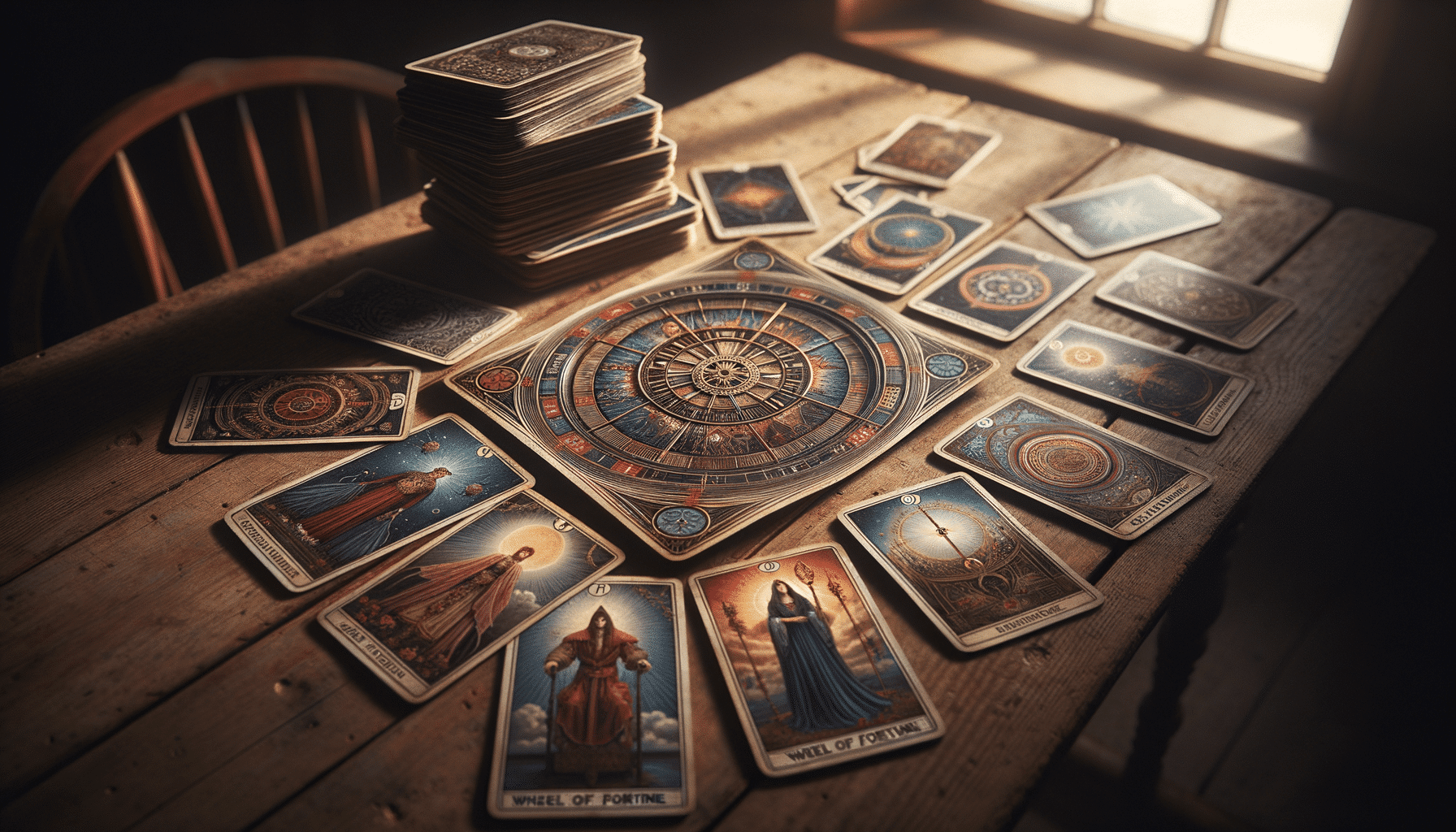
Now, let’s tackle the symbols you’ll come across in tarot cards. You’ll soon see that each card’s imagery holds specific meanings, a language of sorts that’s waiting for you to decipher.
Decoding Tarot Imagery
In understanding the 78 tarot cards, it’s essential to grasp the symbolism that each image holds. The pictures aren’t just there for aesthetics; they carry specific meanings that can guide your interpretation.
The Major Arcana
-
Cards like The Fool or The Lovers often represent life’s big events and decisions. The Fool, for instance, symbolizes new beginnings.
The Minor Arcana
-
These cards depict everyday matters. The 10 of Cups might represent family happiness or fulfillment.
The Suits
- Each suit (Cups, Pentacles, Swords, Wands) represents a different aspect of life, such as emotions or challenges.
Symbolism in Tarot
To delve deeper into tarot card readings, you’ll need to pick up on the intricate symbols that each card holds. These symbols aren’t there just for show – they hold significance that helps to communicate the card’s meaning.
For instance, the ‘Death’ card often sparks fear, but it’s not about physical death. The card depicts a skeleton, a symbol of fundamental change or transformation.
Similarly, the ‘Tower’ card shows a tower struck by lightning, symbolizing sudden upheaval or revelation.
Understanding these symbols helps you make sense of the cards’ messages.
Learn even more secrets of Tarot Interpretation here…
Importance of Tarot Card Positions
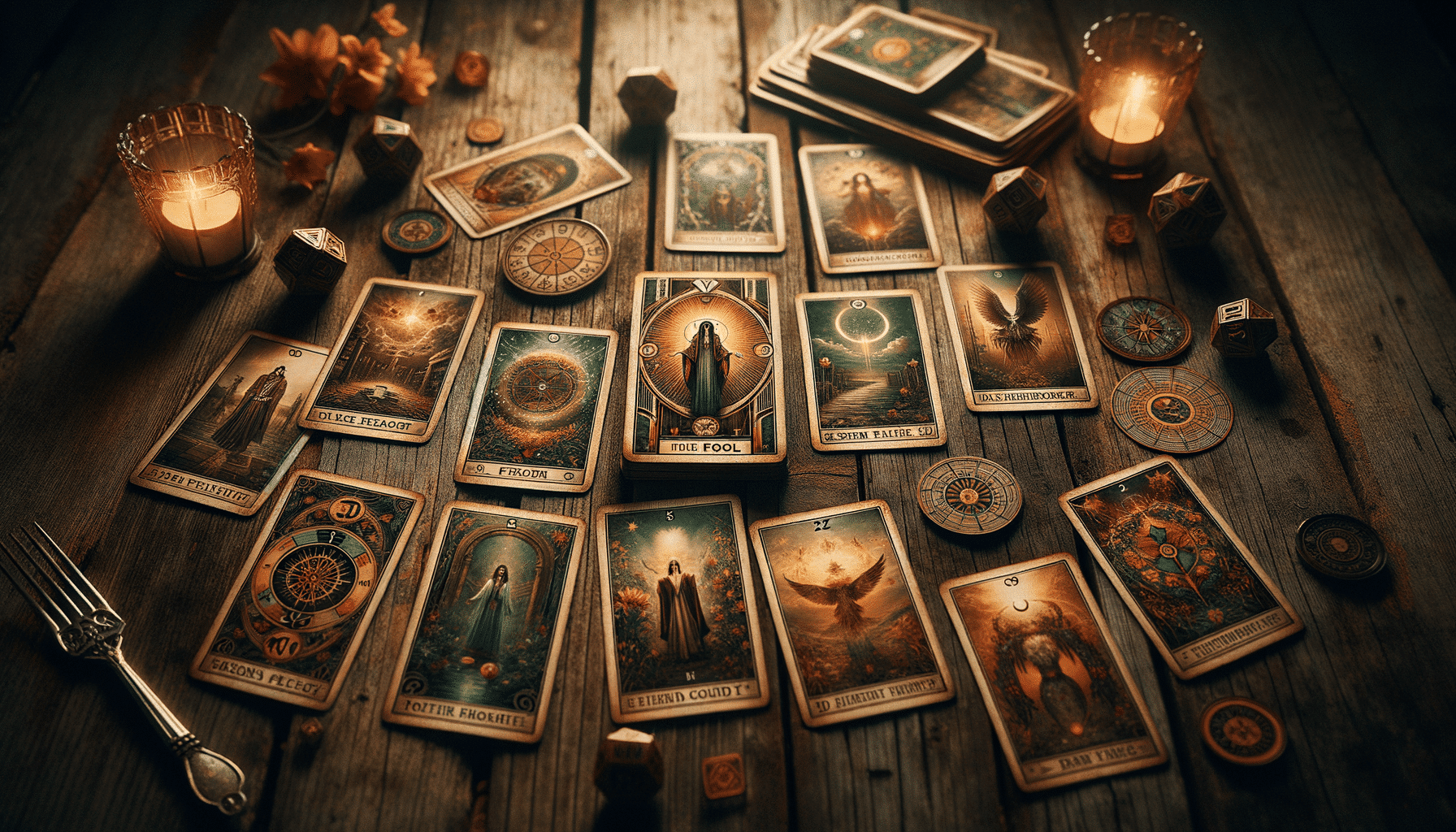
You might wonder why a tarot card’s position in a spread matters so much. It’s because each spot in a tarot layout holds a unique meaning that influences the interpretation of the card placed there.
This means, the same card can have different implications depending on where it’s positioned, showcasing the importance of understanding variations in card layouts.
Understanding Card Positions
One must understand that each tarot card’s position in a spread isn’t arbitrary; it’s pivotal to interpreting the overall message. The position gives context to the card’s imagery and helps weave a coherent story from the cards drawn. Let’s delve into the importance of card positions:
Past, Present, Future Spread:
- The first card represents past influences or events.
- The second card symbolizes the present situation.
-
The third card predicts potential future outcomes.
Celtic Cross Spread:
-
This involves ten positions, each with a unique meaning, ranging from ‘current influences’ to ‘hopes and fears’.
Three Card Love Spread:
- The first card signifies you, the second your partner, and the third the dynamics of the relationship.
Understanding these spreads and their respective card positions can enhance your tarot reading experience.
Positions’ Impact on Interpretations
Understanding the significance of tarot card positions can drastically affect your interpretation of a reading. Each position in a tarot spread holds a unique meaning, influencing the way the cards’ symbolism is interpreted.
For instance, a card in the ‘past’ position may symbolize events or emotions that have shaped your current situation. Meanwhile, a card in the ‘future’ position could indicate potential outcomes or challenges ahead. The ‘present’ position often reflects your current state or immediate challenge. Context is key.
A card that may seem negative could hold a positive meaning depending on its position. By ignoring positions, you risk misreading the cards. It’s not just about the cards themselves, but where they land in the spread.
That’s why understanding positions is crucial in tarot interpretations.
Variations in Card Layouts
Several different card layouts exist in tarot readings, each carrying its own importance and influence on the overall interpretation. The position of a card within a layout, often called a spread, can drastically alter your understanding of its significance.
-
The Celtic Cross Spread: This is one of the most popular and detailed spreads. It uses ten cards to provide a comprehensive view of your past, present, and future.
-
Past: The cards in this position can shed light on past experiences that are influencing your current situation.
-
Present: These cards give insight into your current circumstances.
-
Future: The cards here may indicate potential outcomes or future influences.
Tarot Cards and Intuition

In your journey with tarot cards, you’ll find that intuition plays a crucial role in interpreting the specific meanings behind each card. You don’t just read tarot cards; you feel them. Every card carries its traditional meaning, but your intuition adds a unique layer of understanding. This personal connection with the cards allows you to delve deeper, uncovering insights that a textbook interpretation might miss.
Don’t be afraid to trust your gut feelings. If a card sparks a particular emotion or reminds you of a specific event, there’s likely a reason for it. These intuitive responses can bring clarity to your readings, making them more pertinent and valuable.
However, it’s important to remember that intuition isn’t infallible. It’s a tool to aid interpretation, not a magical power guaranteeing absolute accuracy. And, while it’s vital to listen to your intuition, you must also maintain a level-headed approach. Let your intuition guide you, but don’t let it overshadow the traditional meanings of the cards.
The Role of the Reader in Interpretation

Interpreting tarot cards isn’t just about knowing their traditional meanings; it’s about how you, as the reader, apply your unique perspective and intuition to the reading. You’re not merely a passive transmitter of universal knowledge but an active participant in the process.
Consider these aspects:
- The way you shuffle and draw the cards
- Some readers believe the cards drawn aren’t by chance, but represent a meaningful pattern guided by unseen forces.
-
You might feel drawn to a specific card, which could signify its importance in the upcoming reading.
-
Your personal interpretation of the cards
- You might connect with certain cards more than others, which will inevitably influence the way you interpret them.
-
Different readers might see different things in the same card, bringing their own experiences and insights to the table.
-
Your emotional state during the reading
- If you’re in a calm, balanced state, you might interpret the cards differently than if you’re anxious or upset.
- The way you feel can influence the energy you bring to the reading and how you interpret the cards.
Common Misconceptions About Tarot Meanings

Despite your best efforts, you may still harbor some misconceptions about tarot meanings. These misconceptions can prevent you from fully appreciating the value and depth of a tarot reading. But don’t worry, you’re not alone. Many people share these confusions. Let’s debunk some of the most common ones.
| Misconception | Truth | Why It Matters |
|---|---|---|
| Tarot predicts the future | Tarot suggests possible outcomes, not definite futures | It emphasizes free will and personal growth |
| Bad cards mean bad fortune | There are no ‘bad’ tarot cards, just challenging ones | It’s about perspective and learning from difficulties |
| You need psychic abilities to read tarot | Anyone can learn tarot | It’s a tool for self-reflection and insight |
Remember, tarot is more about understanding yourself and your circumstances than predicting your future. It’s a tool for reflection, not a crystal ball. Misinterpreting the purpose of tarot can lead to misguided expectations and disappointment.
With a clearer understanding of what tarot truly represents, you’re ready to delve deeper into the nuances of readings. Up next, we’ll explore how your personal context can impact your interpretation of a reading.
The Impact of Personal Context on Readings

Often, you’ll find that your personal experiences and current circumstances significantly influence how you interpret a tarot reading. The cards might depict universal symbols, but your unique perspective gives them life and meaning.
Consider this:
- If you’ve recently experienced a breakup, you might interpret the ‘Death’ card as a symbol of your lost relationship, or perhaps the end of an era and the start of a new one.
- On the other hand, if you’re embarking on a new career, the same card might symbolize the end of your previous professional life.
- Or, if you’re struggling with personal issues, it could represent the need for transformation and personal growth.
Each scenario presents the same card but offers different interpretations based on your personal context. This highlights the dynamic nature of tarot readings. You’re not just passive recipients of the card’s message, but active participants in creating its meaning.
The cards serve as mirrors, reflecting your fears, hopes, and experiences. Therefore, understanding the impact of personal context on readings is essential to fully grasp the power and potential of tarot cards.
Frequently Asked Questions About Tarot Card Readings and Meanings

How Can I Learn to Read Tarot Cards Professionally?
You can learn to read tarot cards professionally by taking courses, reading books, and practicing regularly. It’s important to understand each card’s symbolism and meaning, and how they interact in different spreads.
Are There Online Tarot Card Reading Platforms That Are Accurate?
Yes, there are accurate online tarot platforms. However, remember, it’s not just about accuracy, but your personal connection to the readings. Trust your intuition. It’ll guide you to the most resonating and helpful readings.
Can Tarot Cards Predict Specific Future Events?
Yes, you can use tarot cards to predict specific future events. They’re a spiritual tool that taps into your intuition. However, they don’t provide exact outcomes, but guide you towards possible future scenarios.
Are There Different Types of Tarot Cards for Different Purposes?
Yes, there are various types of Tarot cards for different purposes. You’ve got traditional, themed, and oracle decks. Each serves a unique role, providing insights tailored to love, career, personal growth, and more.
Can Anyone Develop an Intuition for Reading Tarot Cards or Is It a Special Gift?
Absolutely, you can develop intuition for reading tarot cards. It’s not a special gift. With practice, you’ll understand the cards’ meanings and use your intuition to interpret them in context of a reading.
Conclusion
So, you’ve taken a stroll down the tarot card lane, eh? You’ve uncovered their mysterious history, dissected their structure, and delved deep into symbols and positions.
You’ve realized tarot isn’t about predicting your future like some crystal ball from a 1950s movie. It’s about tapping into your intuition and the reader’s interpretation. Remember, your personal context shapes the reading.
Now, you’re no longer a stranger to tarot cards and their profound meanings.
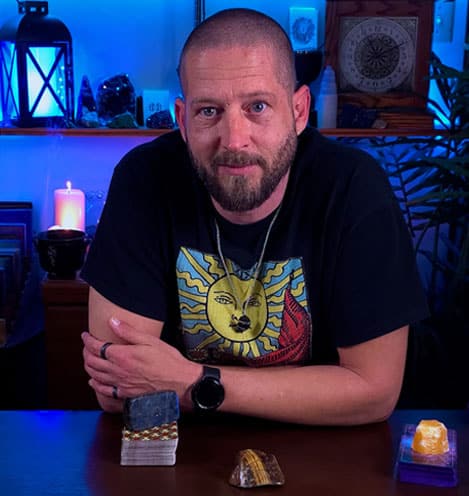
About The Author – Allen Hill
Allen Hill, the force behind Unknown Truth Tarot, has a YouTube following 6-times bigger than the population of his hometown, Miamisburg, Ohio. From his spiritually rich blog on Tarot and crystals to his role as CEO of The Unknown Truth Tarot Metaphysical Shop, Allen’s passion for the metaphysical shines through.
A master Tarot reader and “crystal junkie,” Allen is also a devoted dad to Dylan, 10, and Destiny, 24. When he’s not immersed in the world of Tarot and crystals, he enjoys poker and video gaming sessions, often humorously outplayed by Dylan.
Follow Allen on Twitter, Instagram, Facebook, TikTok, and subscribe to his Unknown Truth Tarot YouTube channel to join him on a journey of spiritual growth and self-discovery.

